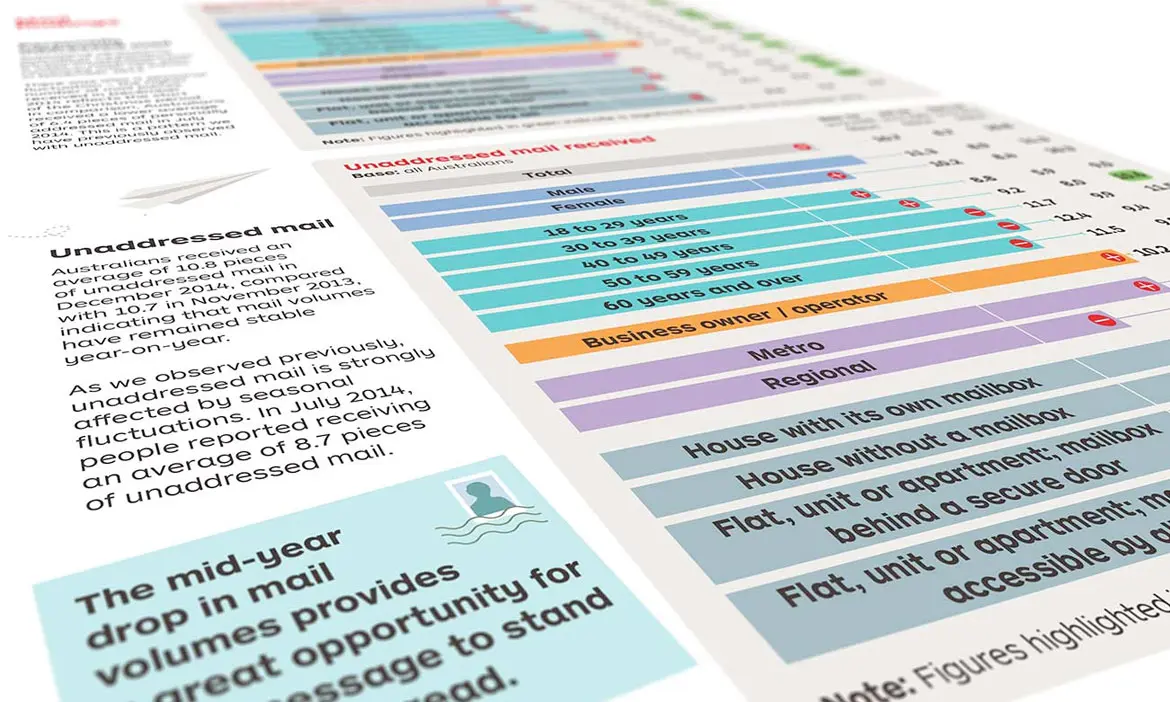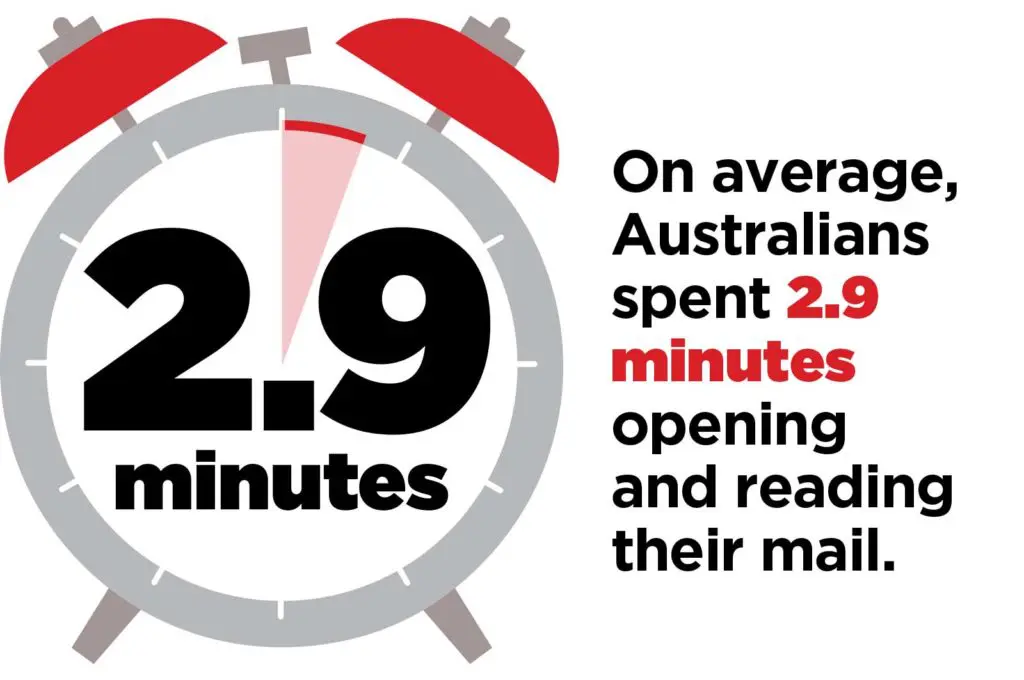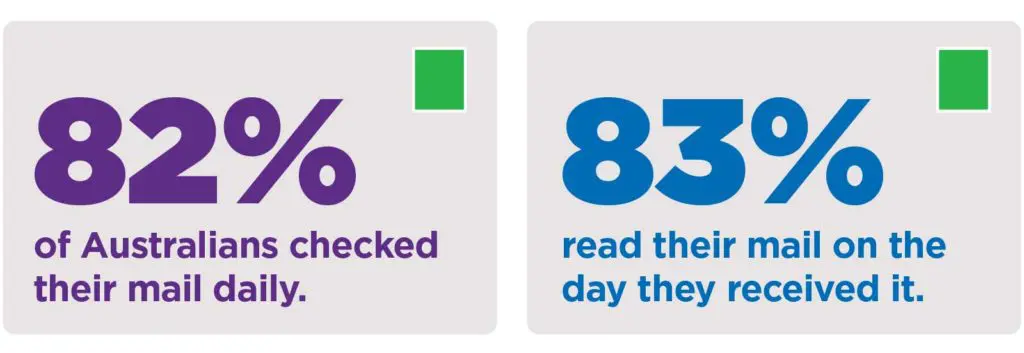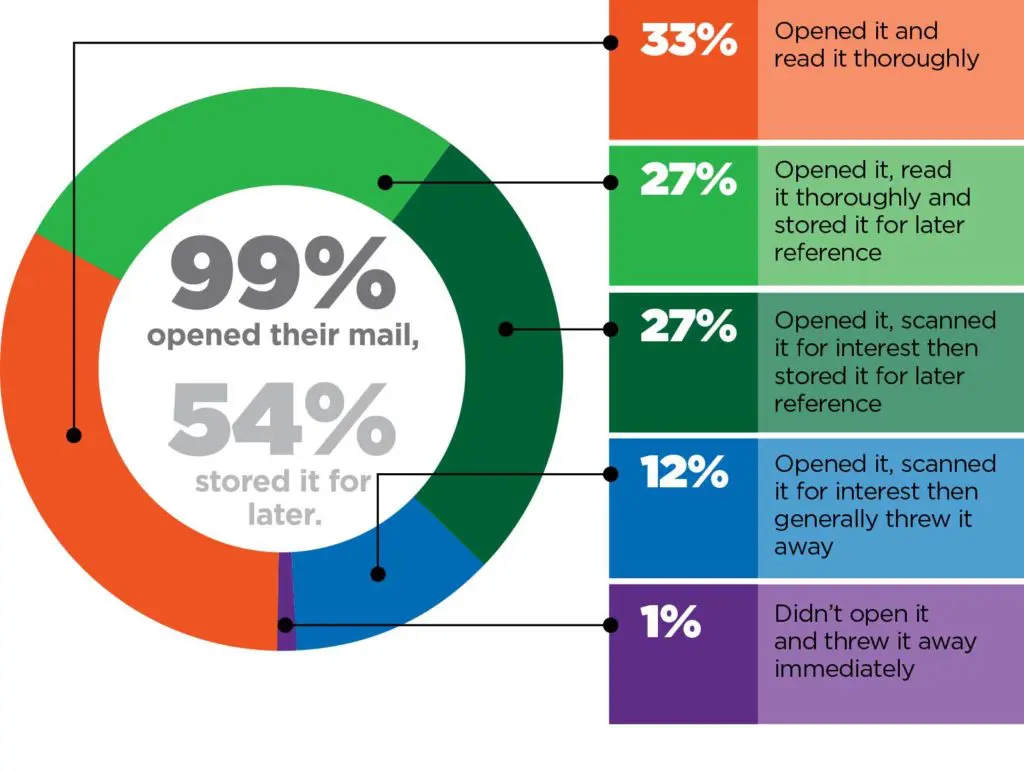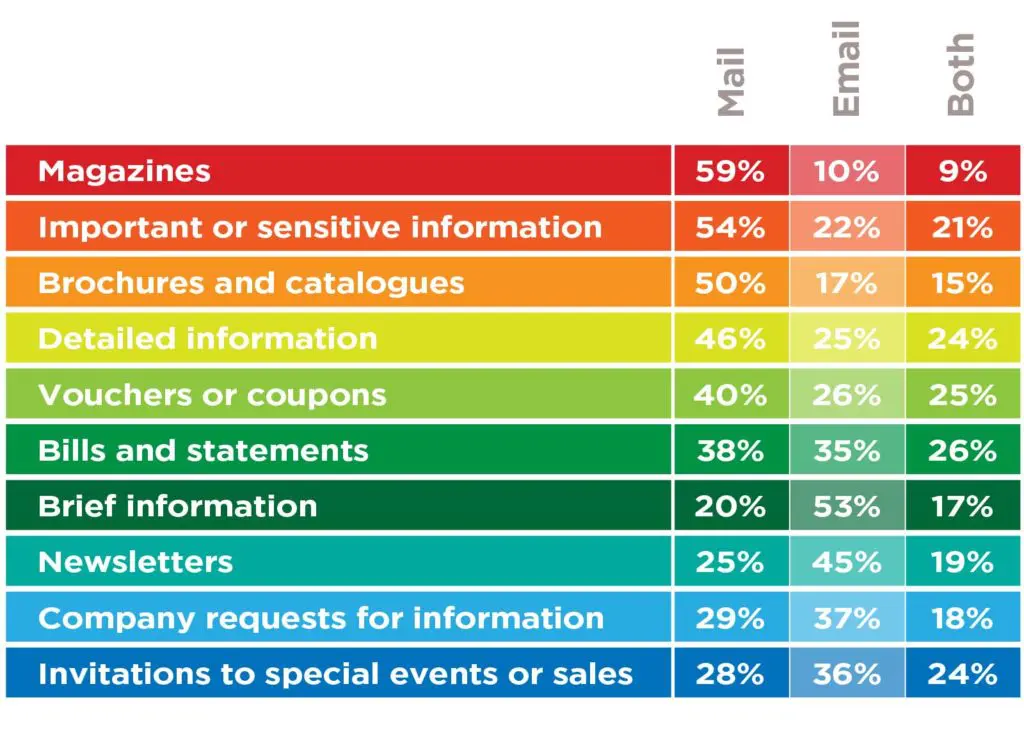Each quarter, the Australia Post Consumer Survey canvasses more than 2,000 Australians, regarding their attitudes towards communications, advertising and the channels marketers use. In December 2014, the survey looked at how much mail people received and how their attitudes towards mail and email communications differ, depending on the industry sending the communication and the message type.
Mail makes an impact
For a long time, people have been making claims that a total shift to email is inevitable. And while this one day may indeed be the case, research conducted by Australia Post shows that not only is the role of physical mail still important, but that in some circumstances physical mail is by far the preferred option across a broad spectrum of people.
Reading mail
Checking and reading mail
Opening and keeping mail
Why is this?
Simple! Looking at the data tells us that if it’s something that people want to read carefully (such as business publications and magazines), or that they might want to keep for reference or later use (such as financial information or even vouchers) then snail mail is how they want to get it. It’s a matter of convenience – being able to relax with a magazine, file your bank statements or put a voucher in your wallet is so much simpler when half the work is already done for you!
Preferred channels and formats
Percentage of people who prefer to receive communications by mail, email or both channels.
Conversely, items which are considered to be more ‘disposable’ – brief updates, short regular newsletters, invitations to events and so on are usually preferred by email, where they can be read and acted on quickly, without the need for unnecessary waste.
So, what’s the message?
It’s awfully tempting to say ‘if it’s important, print it’ here, but that wouldn’t be telling the whole story. In reality, in order to get your message to your audience in the most effective manner, you need to consider:
- content
- audience
- frequency; and
- perception
And then determine which delivery method or methods will work best for each message. It’s important to remember that when it comes to communication, there’s no such thing as a ‘one size fits all’ solution. At APM we have the knowledge and experience to help you inform your audience clearly and effectively via print, web or email in order to maximise your results and best present your corporate image.
In the report:
- Australians received an average of 7.5 pieces of personally addressed mail and 10.8 pieces of un-addressed mail a week
- 99% of Australians opened their mail. 60% also read it thoroughly, and 54% stored it for later reference
- The average time taken to open and read mail was 2.9 minutes
- Australians were most likely to read mail from financial institutions, utilities companies and clubs or interest groups
- Australians wanted to receive magazines, important or sensitive information, brochures and catalogues, detailed information and vouchers or coupons as physical mail
- Australians preferred to receive emails for brief information, newsletters, invitations to special events or sales and company requests for information
- 38% wanted to receive bills and statements as personally addressed mail; 35% preferred email format
Source
- Australia Post Better Connections: Mail continues to deliver 18 February 2015

